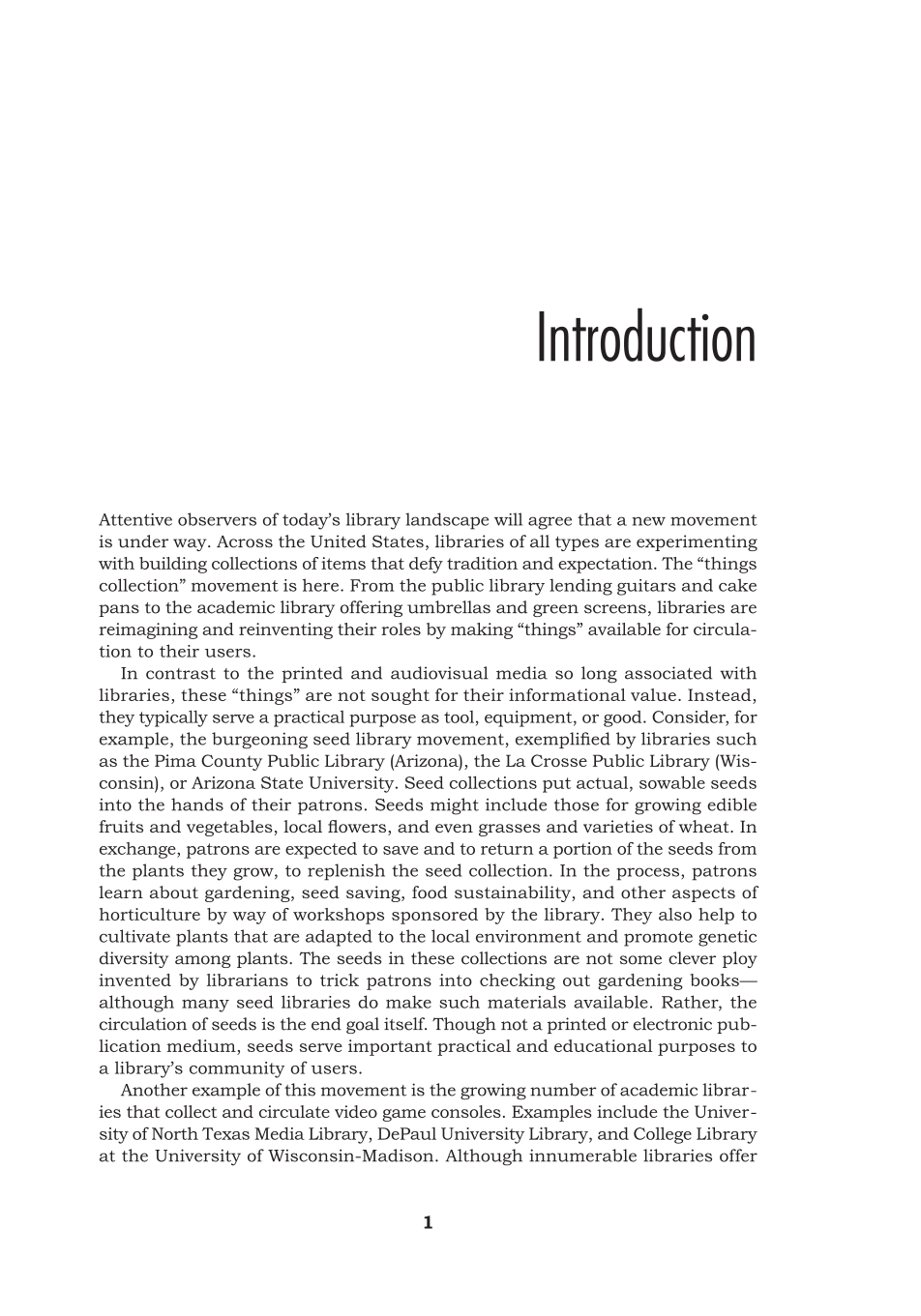1
Introduction
Attentive observers of today’s library landscape will agree that a new movement
is under way. Across the United States, libraries of all types are experimenting
with building collections of items that defy tradition and expectation. The “things
collection” movement is here. From the public library lending guitars and cake
pans to the academic library offering umbrellas and green screens, libraries are
reimagining and reinventing their roles by making “things” available for circula-
tion to their users.
In contrast to the printed and audiovisual media so long associated with
libraries, these “things” are not sought for their informational value. Instead,
they typically serve a practical purpose as tool, equipment, or good. Consider, for
example, the burgeoning seed library movement, exemplified by libraries such
as the Pima County Public Library (Arizona), the La Crosse Public Library (Wis-
consin), or Arizona State University. Seed collections put actual, sowable seeds
into the hands of their patrons. Seeds might include those for growing edible
fruits and vegetables, local flowers, and even grasses and va ri e ties of wheat. In
exchange, patrons are expected to save and to return a portion of the seeds from
the plants they grow, to replenish the seed collection. In the process, patrons
learn about gardening, seed saving, food sustainability, and other aspects of
horticulture by way of workshops sponsored by the library. They also help to
cultivate plants that are adapted to the local environment and promote genetic
diversity among plants. The seeds in these collections are not some clever ploy
invented by librarians to trick patrons into checking out gardening books—
although many seed libraries do make such materials available. Rather, the
circulation of seeds is the end goal itself. Though not a printed or electronic pub-
lication medium, seeds serve important practical and educational purposes to
a library’s community of users.
Another example of this movement is the growing number of academic librar-
ies that collect and circulate video game consoles. Examples include the Univer-
sity of North Texas Media Library, DePaul University Library, and College Library
at the University of Wisconsin-Madison. Although innumerable libraries offer

























































































































































































































































































